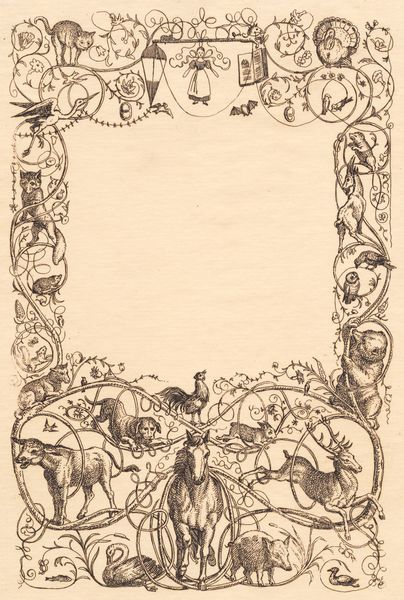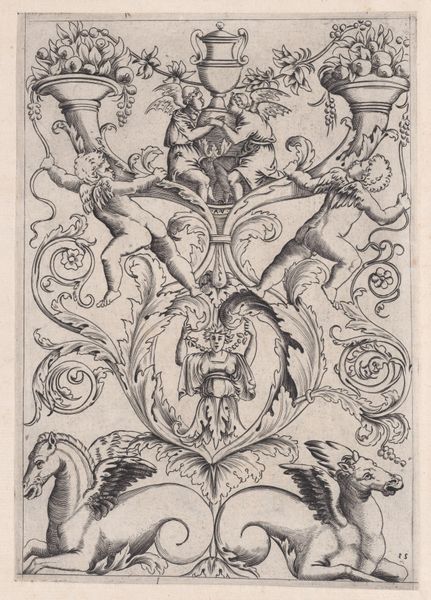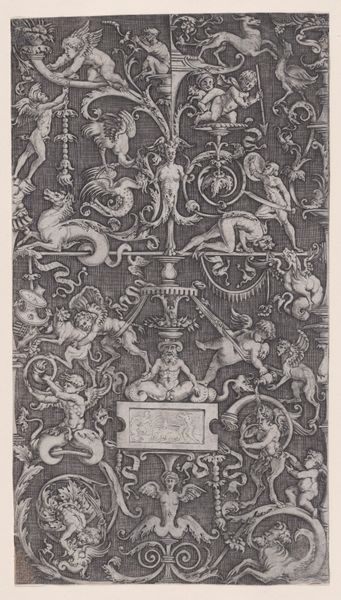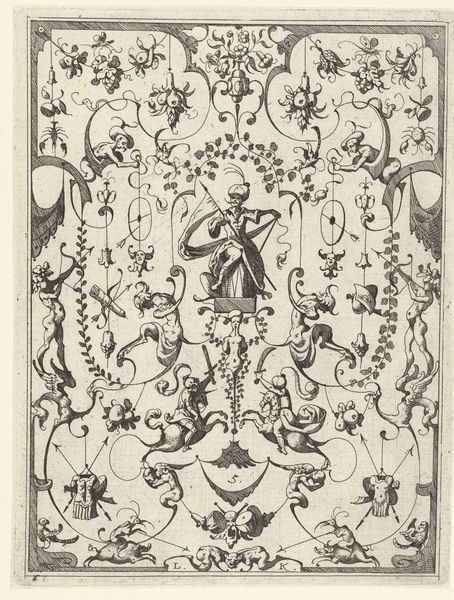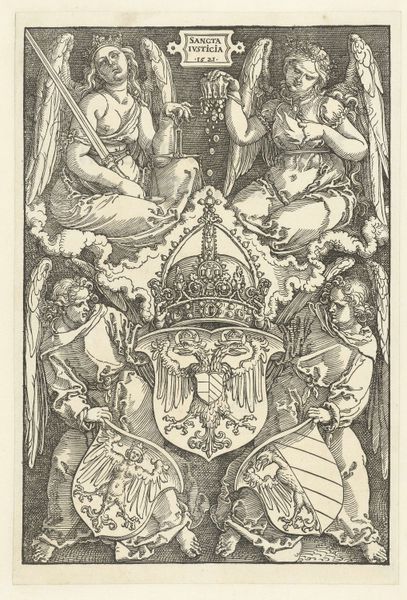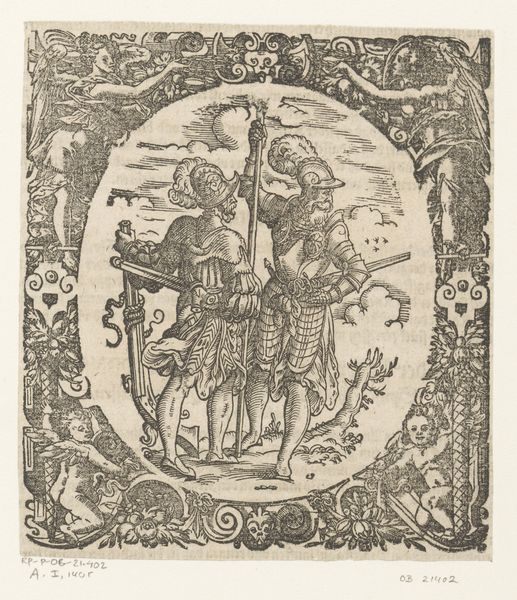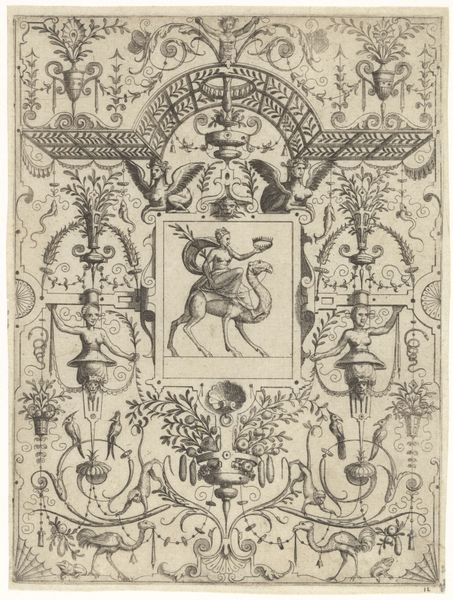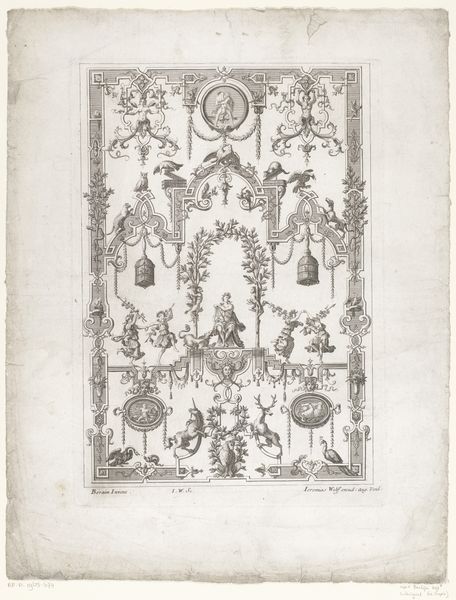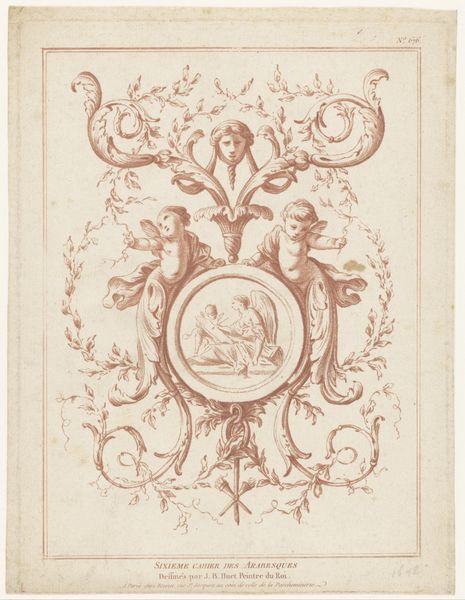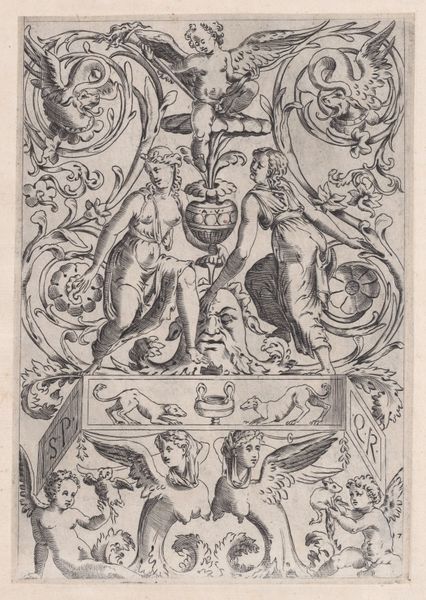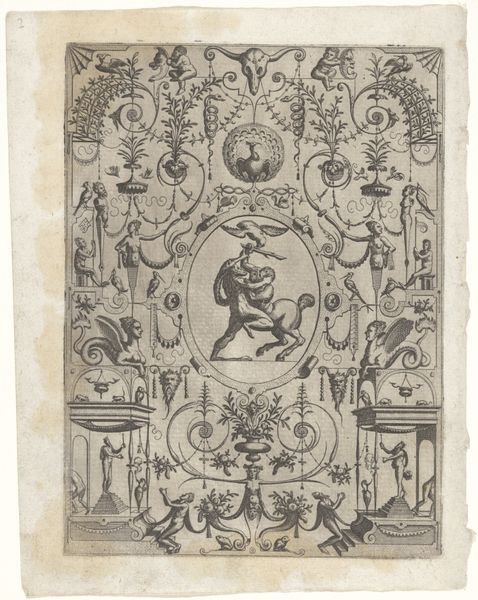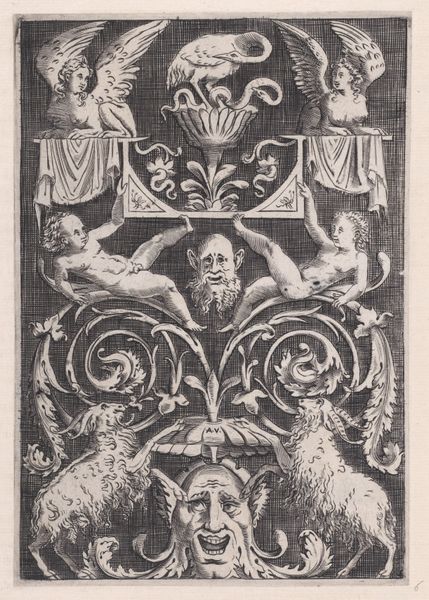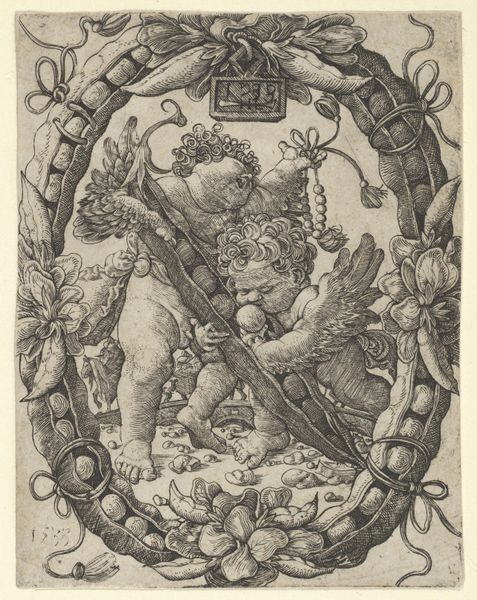
Omslag med slynget lænkeornament med dyr til "Halvhundrede Fabler for Børn" 1834
0:00
0:00
engraving
#
medieval
#
animal
#
figuration
#
line
#
decorative-art
#
engraving
Dimensions: 206 mm (height) x 129 mm (width) (bladmaal)
Curator: My eyes immediately want to wander over this drawing, and I wonder how much of it can be chalked up to the fact that it is so busy. It looks like a garden trellis overtaken with wildlife! Editor: Indeed! This is the cover designed by Martinus Rørbye in 1834 for “Halvhundrede Fabler for Børn”, or “Fifty Fables for Children”. Rørbye’s delicate engraving offers a fascinating glimpse into the aesthetic sensibilities of the time, but it also makes one think of fairy tales—almost like it could have been lifted from the Brothers Grimm! Curator: Fables—yes! The animals, rendered so meticulously—look at the intricate knotwork laced throughout it all—it really does hint at that sense of wonder so integral to good storytelling. Did Rørbye often work in this decorative style? Editor: Rørbye certainly possessed the artistic vocabulary. Considering the cultural context, these choices reflect the Neoclassical interest in linear precision and decorative arts, updated with medieval design motifs. Curator: You know, with all these precisely rendered animals, some are almost goofy, and there is something weirdly endearing. And what is that face at the top?! It looms above it all. Is that Cupid? Or some heraldic...spirit? Editor: It resembles a cherubic figure. This could allude to a guardian spirit overseeing the fables. Furthermore, the animal choices probably weren't arbitrary—the swan and the stag, for example, carry tremendous cultural and art-historical weight, invoking a world where nature speaks volumes. They all act as moral envoys. Curator: Envoys of fabulation! It almost becomes a bestiary, a sort of heraldic achievement of animal characters. Though somewhat faded now, it hints at a deeper philosophical engagement with storytelling as a vehicle for wisdom. And perhaps, a gentle nudge towards virtue for its young audience. Editor: Absolutely! It also speaks to how social norms are transmitted across generations, sometimes subtly, other times not so subtly. And beyond didactic aims, what about simply igniting the imagination of those children reading? Curator: Oh, yes, a visual playground for their young minds! Seeing it this way adds a richer layer of understanding—thank you. Editor: Thank you. I agree, seeing an artwork through many angles offers endless insight into the narratives—seen and unseen—that live within it.
Comments
No comments
Be the first to comment and join the conversation on the ultimate creative platform.
